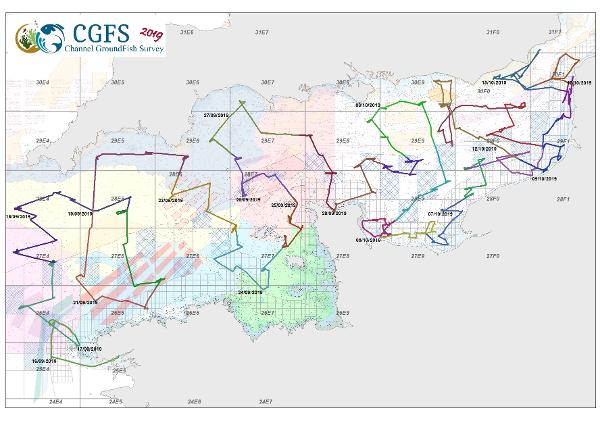CGFS2019
| Type | Oceanographic cruise |
|---|---|
| Set | This cruise is part of the set CGFS : CHANNEL GROUND FISH SURVEY |
| Ship | Thalassa |
| Ship owner | Ifremer |
| Dates | 15/09/2019 - 17/10/2019 |
| Chief scientist(s) | GOASCOZ Nicolas, LE ROY Didier |
LABORATOIRE TECHNOLOGIE BIOLOGIE HALIEUTIQUE 8 rue François Toullec 56100 Lorient +33(0)2 97 87 38 00 |
|
| DOI | 10.17600/18000877 |
| Objective | The English Channel is a sector strongly influenced by fisheries, mostly for France and England but also more widely for Northern European countries. The ecological and economic impacts of the exploitation of fisheries resources must be estimated in order for the fishing activity to stay sustainable while accounting for resources limitation and its effect on the environment. To answer this need, E.U. member states have to carry out sea surveys in order to estimate the abundance and distribution of fish stocks, independently of commercial fisheries data. To achieve this objective, the CGFS (Channel GroundFish Survey) is part of the European program monitoring fish resources, which gather data relative to the exploited stocks (abundance, spatial distribution, maturity, age/size structure, recruitment index). Each year in autumn, about 74 stations are sampled with a standard high vertical opening bottom trawl (GOV 36/47), and the haul is processed to produce the required data. The time series initiated in 1988 is used every year by European stock assessment working groups to derive the exploitation state of the main commercial fish species. Realized on the R/V Thalassa since 2015, the CGFS offers now the possibility to sample the entire ecosystem and to have a better understanding of it, answering both the MSFD requirements and the need of an ecosystem approach of fisheries at the European scale. Thus, using punctual sampling and en-route recording devices, the CGFS survey allows measurement and analysis of the physic-chemical properties of the water (hydrological probe), the phytoplankton (niskin bottle) and zooplankton communities (plankton nets), the fish eggs abundance (CUFES egg pump) and the species composition of demersal community (GOV trawls). Dredges sampling combined with bottom videos were also conducted to characterize both the substrate and the benthic invertebrates of the area. Initially focusing on the eastern Channel, the CGFS might be extended westwards in a close future. In order to prepare a suitable gear and sampling scheme for this area, additional work has been conducted in the western English Channel this year, mostly for finalizing the bottom trawl characteristics.
|


